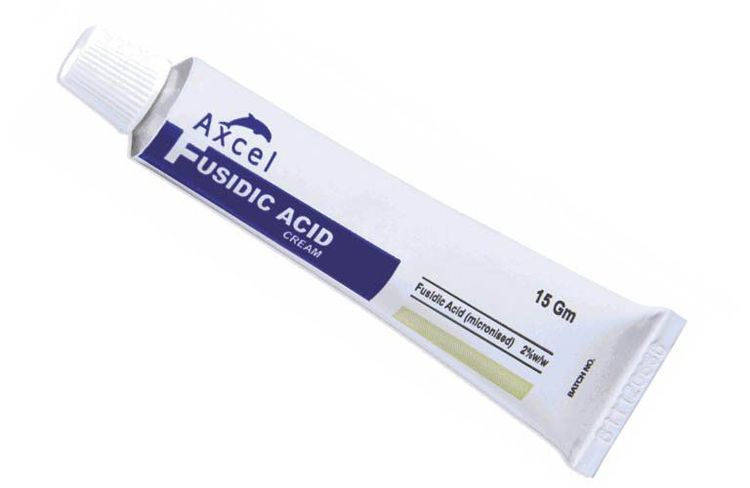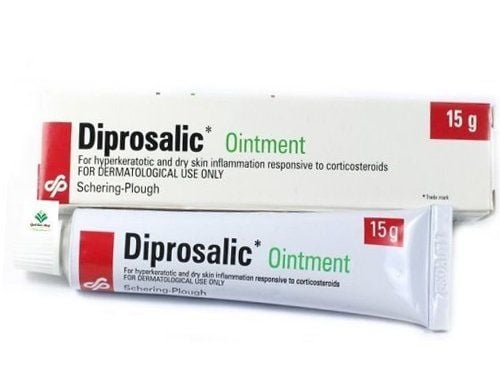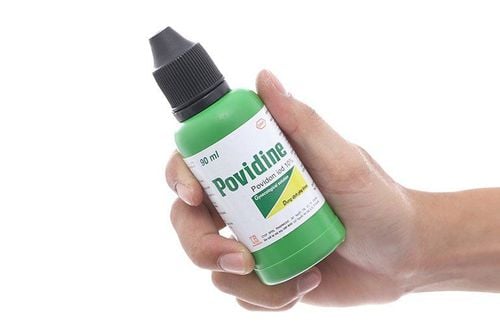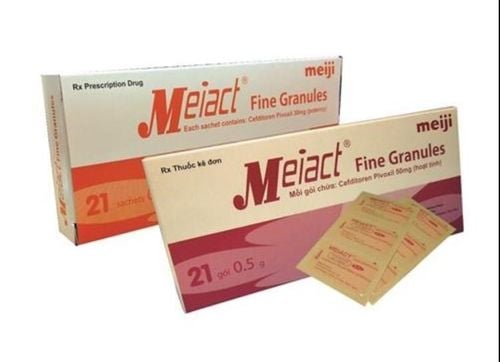Fusidic acid is an antibiotic extracted from the fungus Fusidium coccineum. Fusidic acid has a good effect on acne because the drug has a good effect on gram-positive bacteria such as staphylococcus and corynebacterium.
1. What is the effect of fusidic acid?
Fusidic acid is an antibiotic that is both hydrophilic and lipophilic. It penetrates very well into the skin, reaching deep layers and being present in all layers of skin and subcutaneous tissue. The drug works by preventing the growth of bacteria that cause infection. Sodium fusidate is a salt of fusidic acid and works by a similar mechanism. Topical fusidic acid is suitable for superficial and deep skin infections.
Fusidic acid is indicated for the treatment of skin infections caused by viruses, staphylococci, streptococci, and other microorganisms sensitive to fusidic acid. Fusidic acid in the form of cream or sodium fusidate ointment is an antibiotic that quickly clears up infections on the skin surface, especially small areas of infection. If the skin infection is more widespread, antibiotic tablets or liquids may be prescribed for treatment.
Skin conditions are commonly treated with fusidic acid topical ointment, such as discoid eczema, stasis eczema, seborrheic dermatitis, allergic dermatitis, contact dermatitis, chronic lichen simplex, psoriasis, sunburn, and discoid lupus erythematosus. Additionally, fusidic acid ointment is also indicated for treating conditions like impetigo, folliculitis, beard folliculitis, superficial wounds, fungal infections caused by Corynebacterium minutissimum, boils, traumatic or postoperative wounds, burns, pimples, sweat gland inflammation, varicose ulcer, nail fold inflammation, and common acne.

2. How to use fusidic acid?
Fusidic acid can be used as an injection, a topical medication, and an oral medication. Before starting treatment, you should read the instructions carefully and use the medication exactly as directed by your dermatologist. For topical fusidic acid, apply a thin layer of cream/ointment to the infected area and rub it gently on the skin surface. You should use it 3–4 times a day unless otherwise directed by your doctor. Remember to always wash your hands thoroughly after using the medication (unless you are using it to treat a condition on your hands).
3. What is the dosage of fusidic acid for adults?
The usual dosage of fusidic acid for adults with susceptible bacterial infections:
For oral form, you are typically prescribed 500 mg to be taken 3 times a day. The dosage may be increased to 1 g taken 3 times a day for cases of acute infections.
For injection form, the dosage is based on body weight, as follows:
- If weighing more than 50 kg, you should use 500 mg injected 3 times a day; the dosage may be increased to 1 g injected 3 times a day for acute infections.
- If weighing less than 50 kg, you should use 6-7 mg/kg, injected 3 times a day. The drug can be slowly infused over at least 2 hours and administered into a large vein with good flow.
The usual dosage for adults with eye infections:
- For the 1% eye drop form, instill 1 drop into the affected eye every 12 hours for 7 days.
The usual dosage for adults with skin infections:
For the fusidic acid ointment/cream/gel 2% form, apply to the infected skin surface 3–4 times a day until improvement. If using a dressing, reduce the application to 1–2 times a day.
You should follow the doctor’s prescription regarding both the dosage and the duration of treatment. Typically, the treatment process will last around 7-10 days.
4. What is the dosage of fusidic acid for children?
For children with sensitive bacterial infections
For oral medication, you should give your child the dosage according to the child's age as follows;
- Children under 1 year old: use about 15 mg/kg;
- Children 1-5 years old: use 250 mg;
- Children 5-12 years old: use 500 mg orally 3 times/day.
For injection, the dosage is 20 mg/kg divided into 3 injections for children each day. The drug is indicated for slow infusion over at least 2 hours and should be infused into large blood vessels with good flow.
For children with eye infections:
For the eye drop form, it is for children over 2 years old. You should instill 1 drop into the affected eye every 12 hours for 7 days.
For children with skin infections:
For the fusidic acid ointment/cream/gel 2% form, apply to the infected skin area 3–4 times a day until improvement is seen. If using a dressing, reduce the application to 1–2 times a day.

5. Unwanted effects of the drug
Fusidic acid eye drops can cause some unwanted effects including:
- Pain or burning sensation for a short time after using the drug;
- Anaphylactic reaction (in case of hypersensitivity to the drug).
Inform your doctor immediately if you experience any of the following symptoms while using fusidic acid topical:
- Difficulty breathing;
- Rash;
- Stinging and itching;
- Rash and inflammation.
- Swelling of the face, especially around the eyes or eyelids;
- Redness and stinging in the eyes, lasting.
When using a fusidic acid solution, you need to inform your doctor immediately if:
- Jaundice or yellowing of the whites of the eyes appears;
- Pain, stomach reflux;
- Inability to urinate (Anuria)
- Easy bruising on the skin or unexplained bleeding;
- Sores in the mouth, throat, or other infections that last and recur.
6. Notes when using fusidic acid
However, it should be noted that fusidic acid should not be used topically in cases of skin infections caused by viruses, tuberculosis and fungi, perioral dermatitis, rosacea, and skin ulcers, in cases of hypersensitivity to any of the ingredients in the drug.
Be careful when using the drug, use only on the skin, and do not apply to the eyes, or facial skin, treatment time should be limited to 7 days, except in the case of acne treatment to limit the phenomenon of selection of sensitive bacterial strains.
Fusidic acid has an antagonistic effect with ciprofloxacin and interacts with penicillin, as well as high doses or prolonged use of paracetamol, which can be toxic to the liver. When used in combination with oral diabetes medications or insulin, it may increase blood sugar levels.
Fusidic acid is generally well tolerated. However, there is a very small incidence of hypersensitivity or allergic reactions to the drug, although this is rare. Prolonged use and high doses can cause thinning of the skin, skin striae, and dilation of superficial blood vessels, especially when used under occlusive dressings or applied to areas with many folds.
Please dial HOTLINE for more information or register for an appointment HERE. Download MyVinmec app to make appointments faster and to manage your bookings easily.
To arrange an appointment, please call HOTLINE or make your reservation directly HERE. You may also download the MyVinmec app to schedule appointments faster and manage your reservations more conveniently.








